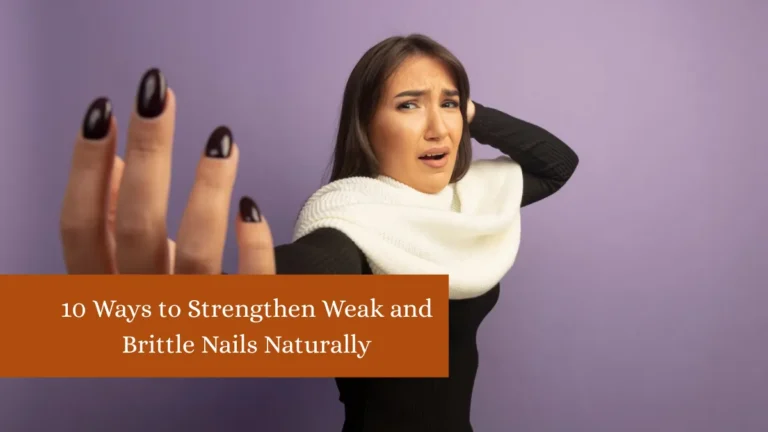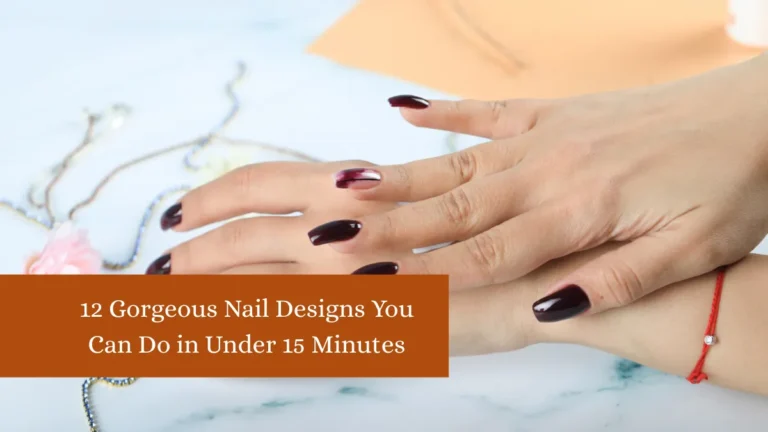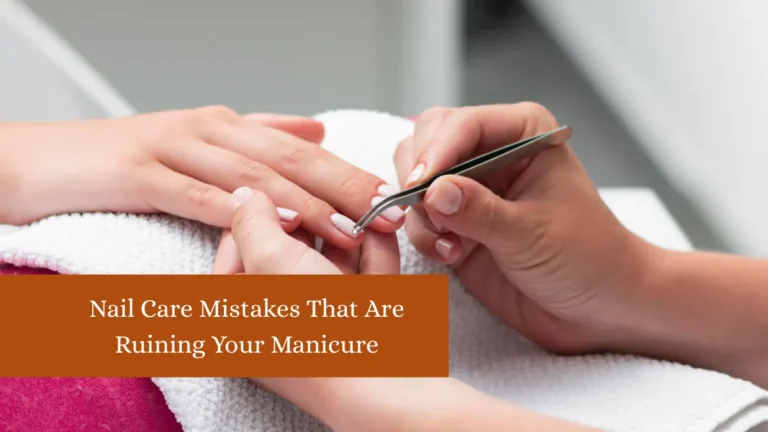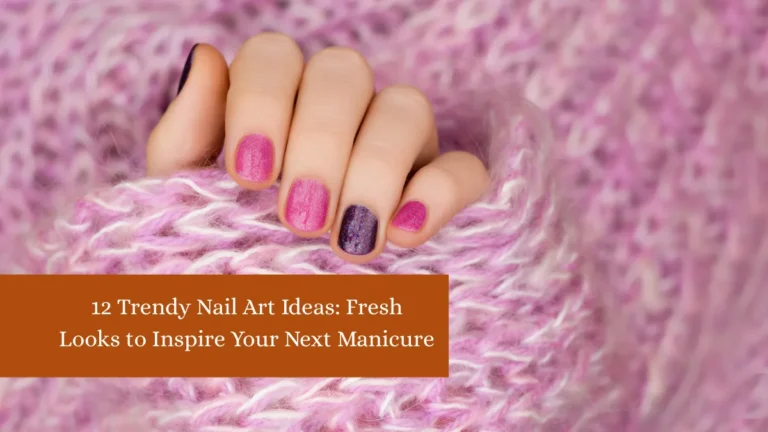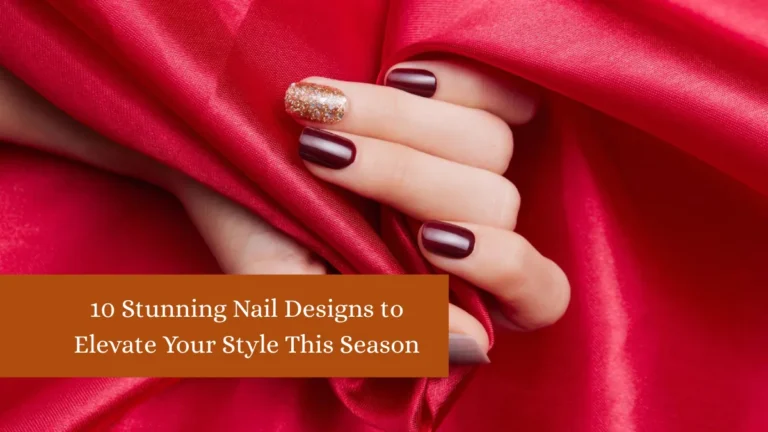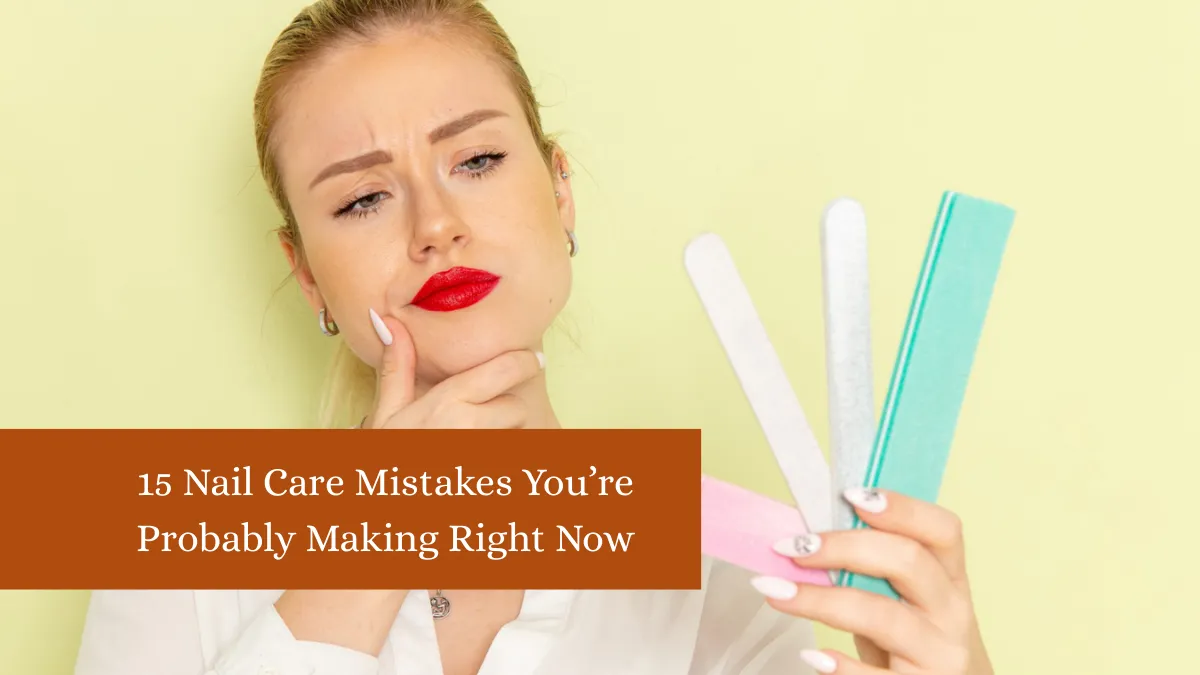Nail care goes far beyond applying polish or filing them into a pretty shape. Many people unknowingly make small mistakes in their daily routine that can lead to brittle, weak, or even infected nails. These mistakes might seem harmless—skipping a base coat, biting your nails when stressed, or leaving polish on for too long—but over time, they can cause serious damage.
The health of your nails depends on more than what you put on them; it’s also about how you treat them between manicures. Whether you want salon-perfect nails at home or simply aim for stronger, healthier natural nails, avoiding common pitfalls is crucial. In this guide, we’ll break down 15 nail care mistakes you might be making right now, explain why they’re harmful, and give practical tips for correcting them. By making small changes, you’ll protect your nails from damage and keep them looking their absolute best.
1. Skipping a Base Coat
A base coat is not just an optional step—it’s an essential layer of protection for your nails. Many people skip this step to save time, but this decision can lead to discoloration, staining, and weakened nail structure. A base coat acts as a barrier between your natural nail and colored polish, preventing pigments from seeping into the nail plate. It also helps polish adhere better, which means your manicure will last longer without chipping.
Some base coats are infused with strengthening agents, vitamins, or hydrating ingredients, adding an extra boost to nail health. Skipping a base coat can also lead to uneven polish application, as it fills ridges and creates a smooth surface for polish to glide on. If you frequently wear dark or red polishes, a base coat is even more critical, as these shades are notorious for leaving yellow stains behind. In short, a base coat is a non-negotiable step if you care about both the appearance and long-term health of your nails.
2. Overusing Nail Hardeners
While nail hardeners can be beneficial for weak nails, overusing them can actually cause brittleness and breakage. Many hardeners contain high levels of formaldehyde, which works by cross-linking keratin proteins in the nail, temporarily making them stronger. However, frequent use can make nails overly rigid, causing them to crack under pressure rather than flex naturally. If you use a nail hardener more than once or twice a week, you may notice your nails starting to peel or develop splits.
It’s better to cycle off hardeners periodically and focus on hydration with cuticle oils and moisturizing creams. If your nails are naturally brittle, consider using a fortifying base coat instead of a traditional hardener, as these often provide flexibility along with strength. Always read ingredient labels and choose formulas that are free from harsh chemicals, especially if you have a history of nail sensitivity. Remember—flexible nails are often healthier than overly stiff ones.
3. Using Nails as Tools
Using your nails to open soda cans, scrape off labels, or pry open packages might seem harmless in the moment, but it puts significant stress on the nail plate and surrounding skin. Nails are not designed to withstand the same pressure as actual tools, and this habit can cause them to chip, split, or break deep into the nail bed—an injury that can take months to grow out.
Even worse, using nails in this way can cause trauma to the nail matrix (the growth area under your cuticle), potentially leading to permanent ridges or deformities. Instead, keep a small multi-tool or letter opener nearby for tasks that require prying or scraping. Protecting your nails from mechanical stress will help them stay strong, smooth, and even. It’s a simple habit change, but one that significantly reduces the risk of painful nail damage.
4. Cutting Cuticles
Cuticles play an important role in nail health—they act as a protective barrier, sealing off the space between your skin and the nail plate to prevent bacteria and fungi from entering. Cutting cuticles, whether at home or in a salon, removes this barrier and increases the risk of infection. Instead of cutting, push them back gently using a cuticle pusher after softening them with warm water or cuticle oil. If you have ragged or overgrown cuticles, use a cuticle remover gel to dissolve excess skin without cutting.
Maintaining healthy cuticles also helps nails grow stronger, as the nail matrix beneath them stays protected. While it might seem like trimming creates a cleaner look, over time it can actually lead to more hangnails, redness, and irritation. A tidy, moisturized cuticle is not only healthier but also gives your nails a naturally polished appearance without the risk of injury.
5. Peeling Off Nail Polish
Peeling off old nail polish might feel oddly satisfying, but it can strip away the top layers of your nail plate in the process. This weakens nails, making them more prone to breakage and peeling. When polish is removed by peeling, tiny layers of keratin are pulled off with it, leaving nails rough, thin, and uneven. Over time, this damage accumulates, and it can take months for healthy nail layers to grow back.
The correct way to remove polish is to use an acetone or non-acetone remover with a cotton pad, gently pressing it against the nail for a few seconds before wiping. If you’re wearing glitter polish or gels, use the soak-off method rather than scraping or peeling. Treat your nails gently during removal, and follow up with a hydrating nail and cuticle oil to replenish lost moisture.
6. Neglecting Moisturization
Dry nails are brittle nails. Just like your skin, your nails need regular hydration to remain strong and flexible. Washing hands frequently, using harsh soaps, and exposure to cold weather can all strip moisture from nails and cuticles. Without replenishment, nails can develop ridges, peel, or break more easily. Incorporating nail and cuticle oil into your daily routine is one of the simplest ways to keep them hydrated.
Oils containing jojoba, almond, or vitamin E penetrate deeply into the nail plate, restoring flexibility and preventing splits. Hand creams with glycerin or shea butter can also lock in moisture, especially when applied before bed. For maximum benefit, moisturize after every hand wash and before bedtime, allowing the oils and creams to work overnight. Proper hydration not only improves nail health but also keeps them looking glossy and well-maintained.
7. Filing Nails Incorrectly
Filing your nails may seem straightforward, but doing it incorrectly can cause more harm than good. Sawing back and forth with a coarse file can create microtears in the nail plate, leading to peeling and breakage. The correct method is to file in one direction only, starting from the outer edge toward the center. Choosing the right grit is also important—use a fine-grit file for natural nails to avoid excessive thinning.
Filing nails when they’re wet is another common mistake, as water softens the nail, making it more prone to splitting. Always ensure nails are dry before filing, and avoid aggressive shaping that drastically changes the natural curve of your nails, as this can weaken their structure. By filing gently and with the correct technique, you’ll maintain smooth edges and prevent avoidable nail damage.
8. Wearing Nail Polish for Too Long
Leaving nail polish on for weeks might seem harmless, but it can cause staining, dryness, and even nail thinning. Over time, pigments from polish—especially darker shades—can penetrate the nail plate, leaving it discolored. Additionally, keeping polish on too long traps your nails under a non-breathable barrier, which can cause them to become brittle. This is particularly concerning with gel or acrylic nails, as prolonged wear without breaks can lead to nail dehydration and weakness.
The safest approach is to give your nails a “naked” break every 1–2 weeks, during which you can hydrate and treat them. Use a nail strengthener or nutrient-rich oil during these breaks to replenish moisture and flexibility. If you notice white patches or peeling after polish removal, it’s a sign that your nails need rest. Treat them with gentle buffing and regular moisturization before your next manicure. Taking breaks might feel like a sacrifice for beauty, but it’s an investment in keeping your nails healthy long-term.
9. Biting Nails or Hangnails
Nail biting isn’t just a bad habit—it’s a damaging one. Every time you bite your nails, you’re not only weakening the nail plate but also exposing the surrounding skin to infection. Your mouth contains bacteria that can easily enter small cuts or tears, leading to painful inflammation. Biting hangnails is equally risky, as it can rip live skin, causing bleeding and prolonged healing times. Over time, chronic biting can damage the nail matrix, resulting in irregular nail growth or permanent deformities.
To break the habit, keep your nails neatly trimmed and moisturized to reduce the temptation. Applying a bitter-tasting nail polish can act as a deterrent, while stress-relief activities like fidget tools or stress balls can replace the oral fixation. Remember—every bite slows your progress toward healthier, more attractive nails. Breaking the habit not only improves appearance but also protects you from avoidable nail and skin infections.
10. Ignoring Nail Infections
Nail infections, whether fungal or bacterial, often start small—slight discoloration, minor swelling, or subtle changes in texture. But ignoring them can lead to severe complications, including permanent nail damage or loss. Fungal infections thrive in warm, moist environments, making sweaty shoes or damp gloves a perfect breeding ground. Bacterial infections often occur when the skin around the nails is injured, especially after aggressive cuticle trimming or biting.
Early treatment is key: mild cases may respond to antifungal creams or antibacterial soaks, while persistent or severe infections require medical attention. Signs you shouldn’t ignore include yellowing, thickening, foul odor, or pain in the nail area. Practicing good hygiene, wearing breathable footwear, and avoiding prolonged moisture exposure are effective prevention strategies. The sooner you address an infection, the easier it is to treat—waiting only increases damage and the time it takes for healthy nails to grow back.
11. Using Harsh Nail Products
Not all nail products are created equal. Many polishes, removers, and treatments contain harsh chemicals like formaldehyde, toluene, and dibutyl phthalate (DBP), which can weaken nails over time and cause skin irritation. While these chemicals can make polish more durable or speed up drying time, they come at the cost of long-term nail health. Prolonged exposure can lead to brittleness, peeling, and even allergic reactions.
Opting for “3-free,” “5-free,” or “10-free” polishes (formulas free from multiple harmful chemicals) is a safer choice. Similarly, when choosing removers, select acetone-free formulas whenever possible—especially if you remove polish frequently. Acetone is extremely drying, and overuse can strip nails of their natural oils. Always follow product instructions carefully and moisturize after each use. Investing in gentler, high-quality nail products ensures not only a better manicure but also stronger, healthier nails over the long term.
12. Forgetting to Clean Nail Tools
Unclean nail tools are a breeding ground for bacteria, fungi, and viruses. Using dirty files, clippers, or pushers can transfer harmful microorganisms to your nails and cuticles, leading to infections. Even if you’re the only one using your tools, dead skin cells, oils, and debris can accumulate over time. Cleaning tools after every use is essential. For metal tools, wash with soap and hot water, then disinfect with rubbing alcohol.
Emery boards and buffers should be replaced regularly, as they’re harder to clean effectively. If you visit a salon, make sure they use sanitized tools or bring your own kit. This simple habit drastically reduces the risk of infections like paronychia and ensures every manicure starts on a clean, safe foundation. Think of it as basic hygiene for your nails—just as important as washing your hands.
13. Skipping Hand Protection
Exposure to harsh chemicals and excessive moisture can wreak havoc on nails and skin. Household cleaning products, dishwashing detergents, and even gardening soil can dry out and weaken nails. Wearing gloves during cleaning or when handling chemicals is one of the easiest ways to prevent this. For added protection, apply a layer of hand cream or oil before putting on gloves to lock in moisture.
Cold weather is another culprit, as low humidity can cause nails to become brittle—wearing warm gloves outdoors helps retain hydration. Protective gloves aren’t just for chores; they’re a shield against everyday wear and tear, extending the life of your manicure and preserving nail health. Skipping this step might not show immediate damage, but over time, it will lead to weaker, more breakage-prone nails.
14. Over-Buffing the Nail Surface
Buffing can smooth ridges and give nails a healthy shine, but doing it too often thins the nail plate, making it more vulnerable to peeling and splitting. The nail plate is composed of layers of keratin, and excessive buffing removes these protective layers. A light buff once a month is sufficient for most people—anything more frequent risks weakening nails.
Always use a fine-grit buffer and apply gentle pressure, avoiding aggressive back-and-forth motions. If your goal is a glossy look without polish, finish with a polishing buffer rather than over-buffing. Over time, healthy nails naturally develop a smoother surface, so focus on hydration and nutrition rather than constant buffing. By using this technique sparingly, you’ll maintain both appearance and strength.
15. Not Maintaining a Healthy Diet
Nail health starts from within, and a poor diet can directly affect nail strength and growth. Nails are made primarily of keratin, a protein that requires adequate nutrients to be produced effectively. Deficiencies in biotin, vitamin E, zinc, and iron can lead to brittle, weak, or slow-growing nails. Including nutrient-rich foods like eggs, salmon, nuts, leafy greens, and whole grains in your diet can significantly improve nail quality over time.
Hydration is equally important—dehydration can cause nails to become dry and prone to breakage. While supplements can help in some cases, getting your nutrients from whole foods is generally more effective. Viewing your diet as part of your nail care routine is just as important as using oils, polishes, and treatments. Strong, healthy nails are often a reflection of overall health, so nourishing your body is key.
Bottom Line
Healthy nails require more than polish and shaping—they depend on daily habits, proper tools, and mindful care. Many of the mistakes we make, often without realizing, gradually weaken nails and cause long-term damage. By recognizing and avoiding these 15 nail care mistakes, you can strengthen your nails, extend the life of your manicures, and keep your hands looking elegant year-round. A few small changes—like moisturizing regularly, using gentle products, and protecting nails from damage—can make a noticeable difference. Nail care is about consistency, not quick fixes, and the payoff is nails that are as strong as they are beautiful.
FAQs
1. How often should I give my nails a break from polish?
Every 1–2 weeks is ideal to let them breathe and restore hydration.
2. Are nail strengtheners safe to use daily?
Not daily—overuse can make nails brittle; limit to 1–2 times a week.
3. What’s the best oil for nail health?
Jojoba oil is highly effective due to its deep penetration and moisture retention.
4. Can diet really affect nail growth?
Yes—nutrients like biotin, protein, and iron directly impact nail strength and speed of growth.
5. Is buffing bad for nails?
Only if overdone—buff lightly once a month to maintain nail health.
✨ You May Also Like ✨

